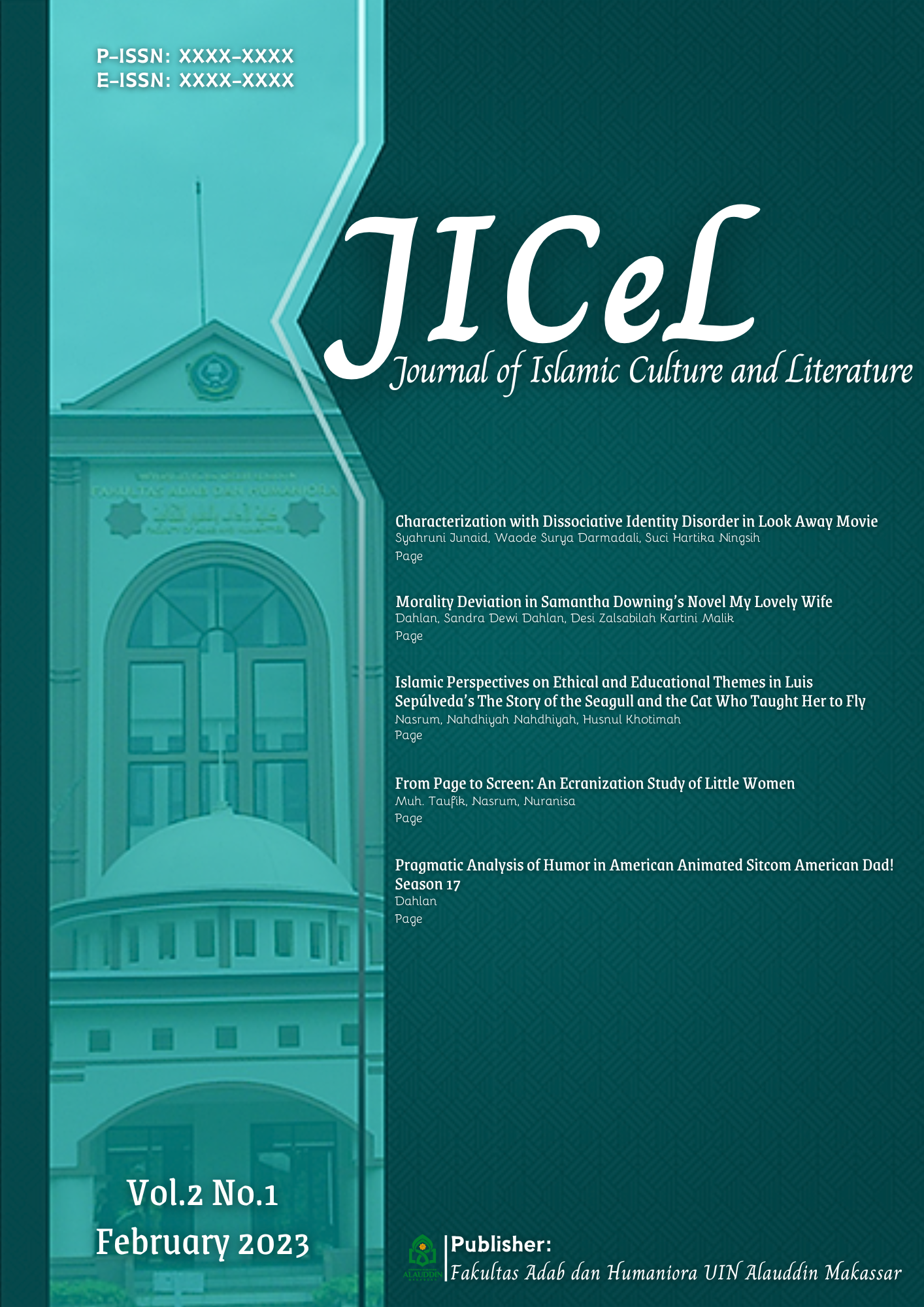ISLAMIC PERSPECTIVES ON ETHICAL AND EDUCATIONAL THEMES IN LUIS SEPUVELDA’S ‘THE STORY OF THE SEAGULL AND THE CAT WHO TAUGHT HER TO FLY'
Abstract
This thesis aims to analyze didactic value. Didactic value is something that is useful in providing teaching to fellow human beings or between individuals and their environment. The novel “The Story of a Seagull and The Cat Who Taught Her to Fly” By Luis Sepulveda is a novel that contains a lot of didactic values according to the theory expressed by Diane Tillman. This study uses a qualitative approach. The data in this study are in the form of sentences or paragraphs contained in the novel. The research method used in this research is content analysis method. In this contex didacticism is reflected in various narrative elements such as characters and messages conveyed. Didactic messages taken from this novel relate to courage, self-development, and taking lessons from failure. Readers are invited to reflect on how challenges and uncertainties in life can be opportunities to learn and grow. This didactic value dominates and indicates that the author deliberately wrote the story with a specific purpose, namely to teach readers as a society that out of all the didactic values there is one most important element in life, namely the value of loyalty. Loyalty is very important to be instilled and carried out in every human being, in order to create a peace in the heart.
Authors who publish with this journal agree to the following terms:
1) Authors retain copyright and grant the journal right of first publication with the work simultaneously licensed under a Creative Commons Attribution License that allows others to share the work with an acknowledgement of the work's authorship and initial publication in this journal.
2) Authors are able to enter into separate, additional contractual arrangements for the non-exclusive distribution of the journal's published version of the work (e.g., post it to an institutional repository or publish it in a book), with an acknowledgement of its initial publication in this journal.
3)Authors are permitted and encouraged to post their work online (e.g., in institutional repositories or on their website) prior to and during the submission process, as it can lead to productive exchanges, as well as earlier and greater citation of published work (See The Effect of Open Access).


